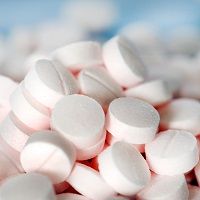FDA Updates HIV Drug Labeling for Pediatric Patients
The US Food and Drug Administration (FDA) updated labeling for rilpivirine, marketed under the name Edurant, for the treatment of the human immunodeficiency virus (HIV). The changes have been made in the dosage and administration, warnings and precautions, adverse reactions, and clinical information sections.

The US Food and Drug Administration (FDA) updated labeling for rilpivirine, marketed under the name Edurant, for the treatment of the human immunodeficiency virus (HIV). The changes have been made in the dosage and administration, warnings and precautions, adverse reactions, and clinical information sections.
Rilpivirine is commonly used in pediatric patients with HIV-1 ages 12 to 17 and RNA no more than 100,000 copies/mL. Changes were made to the labeling in order to include information regarding combination therapy of rilpivirine and other antiretroviral agents. In addition, the label warns about the risk of depressive disorders associated with the drug.
The label updates listed below are summarized from a statement provided by the FDA:
Section 2: Dosage and Administration:
- Not recommended for patients under the age of 12
- Patients ages 12 and older (weighing at least 35 kg or approximately 77 lbs) are recommended to take one 25 mg tablet daily with a meal
Section 5: Warnings and Precautions:
- The following depressive disorders have been reported as adverse reactions: depressed mood, depression, dysphoria, major depression, mood altered, negative thoughts, suicide attempt, and suicidal ideation
- Patients with severe depressive symptoms should seek medical attention
Section 6: Adverse Reactions:
- No serious adverse events, deaths, or treatment discontinuations were reported in multiple 96-week long phase three trials analyzing adult patients.
- In a 48-week phase two trial including 36 pediatric patients with HIV, 19 reported adverse reactions — most of which were grade one or two. The most common reactions included: headache, depression, somnolence, nausea, dizziness, abdominal pain, vomiting, and rash.
Section 12: Clinical Pharmacology:
- Includes adolescent pharmacokinetic data
Section 14: Clinical Studies:
- A phase two clinical trial examining the pharmacokinetics, safety, tolerability, and efficacy of one 25 mg tablet daily in patients ages 12 to 17 resulted in an average CD4+ cell count increase of 201.2 cells/mm3 from baseline